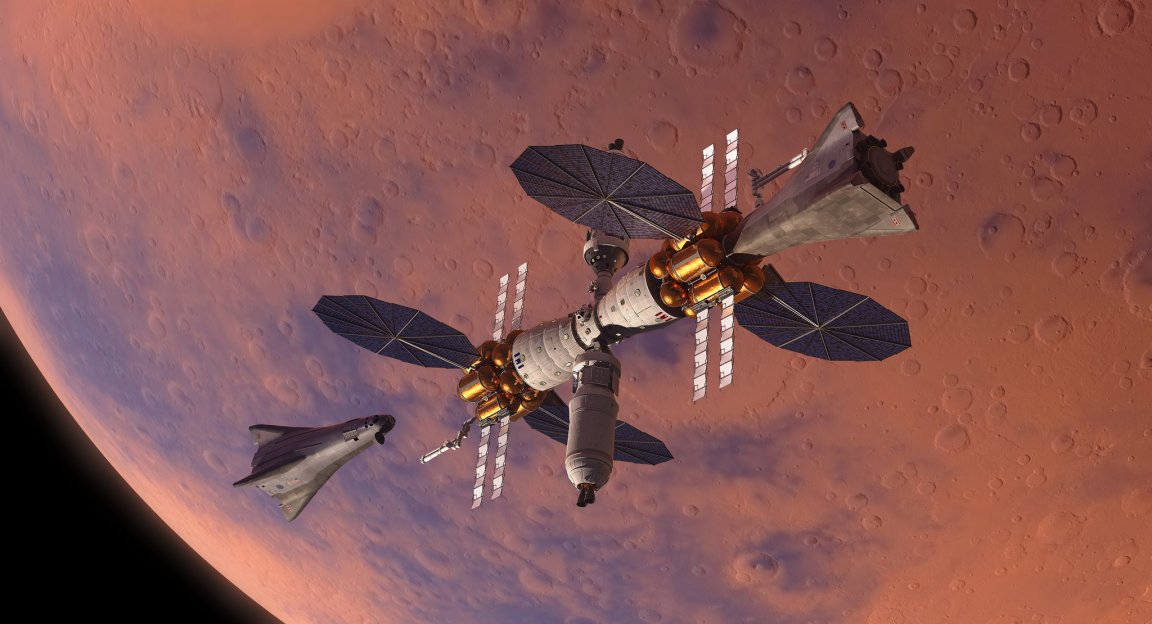
Leaders in Space
Elon Musk might be generating the most hype thanks to his teasing tweets, but SpaceX isn’t the only company with plans to deliver big announcements at this year’s International Astronautical Congress (IAC) in Adelaide, Australia. Lockheed Martin has their own major updates to share with the world.
If SpaceX is the young upstart of the space industry, Lockheed Martin is the weathered veteran. While Musk’s company boasts roughly 5,000 employees, Lockheed Martin has nearly 100,000 spread out across dozens of nations. For decades, they have been a leading innovator in everything from energy to military operations, and their contributions to space have been invaluable.
Through partnerships with NASA, the U.S. government, and others, Lockheed Martin has developed powerful space telescopes and launched more than 100 commercial satellites, helping disseminate information across the globe. They had a hand in the creation of the Hubble Space Telescope, the Jupiter-orbiting JUNO space probe, and the Phoenix spacecraft that landed on Mars in 2008.
Their next big goal is a follow-up of sorts to Phoenix, but instead of putting robots on Mars, they want to deliver people to the Red Planet.
Mission to Mars
NASA’s very first Mars lander was built by Lockheed Martin, and now, the company believes they can help the agency and their partners make the dream of a human Mars colony a reality.
Lockheed Martin first revealed their plans for a Mars Base Camp orbiter last year, and before Musk takes the stage to talk about SpaceX’s Interplanetary Transport System, they’ll present their own mission to Mars updates, sharing the latest news on their Deep Space Gateway and unveiling the reusable lander they believe will change how we think about surface exploration.
Lockheed Martin’s presentation will be livestreamed below, and we will be updating this article live throughout to ensure you don’t miss a thing.
UPDATE 6:45 PM EST: Lockheed Martin will no longer be livestreaming this presentation due to technical issues, but as soon as the link to the recorded presentation is posted, we’ll update this article with all the highlights.
We will post the full Mars Base Camp webcast soon after the presentation concludes. Check back at ~7:30 ET. for a link. #IAC2017
— Lockheed Martin (@LockheedMartin) September 28, 2017
UPDATE 8:20 PM EST: The presentation has been posted, and you can watch it for yourself as we update with the highlights below.
- “[Exploring deep space] is probably the greatest team sport that ever existed.”
- Lockheed Martin’s presenters overview the past discoveries made using rovers on Mars.
- “We have the capability to go to Mars now.”
- Lockheed Martin has added an excursion module to Mars Base Camp.
- Almost all critical systems have duplicate backups to ensure astronaut scientist safety.
- The Orion Command Deck is the “heart and soul” of the Mars Base Camp.
- Lockheed Martin has plans to take human back to the Moon for the first time since 1972.
- The presenters overview the Deep Space Gateway, including its solar-electric propulsion and commercial logistics pod.
- Next topic is tele-robotics: “Robots and humans together can do so much more than they can independently.”
- The company’s rovers will enable high-value sample returns and analysis for both the Moon, Mars, and the moons of Mars.
- “We can power this entire spacecraft system just with water.”
- According to Lockheed Martin’s presenters, “Earthlings will buy water from the Moon” for space exploration.
- “Base camps are the places from which you then set out.”
- Lockheed’s presenters unveil details about their refuelable, single stage, restartable lander.
- The lander can support four astronauts for two weeks and then return to Mars Base Camp without being dependent on any surface propellant regeneration
- The lander will have 132,000 pounds of thrust.
- It will enter Mars’ atmosphere at a speed of 5 kilometers per second.
- The lander could return to the Mars Base Camp to refuel and then visit a different location on Mars’ surface.
- “The path to Mars is through cis-lunar space.”